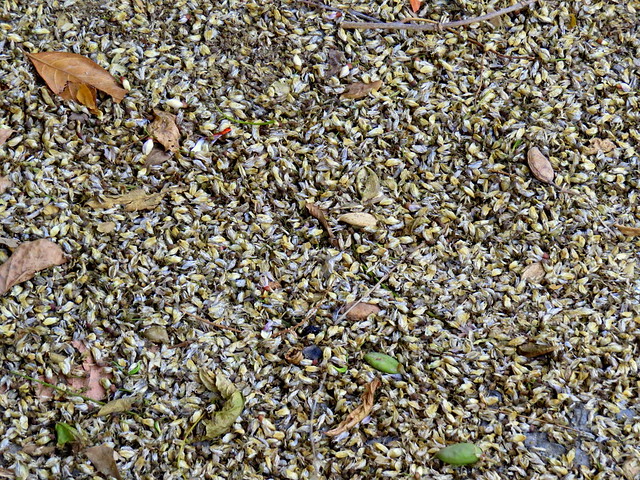One of the wonderful things about Varsha Ritu and Grishma Ritu in our city is still the wonderful carpets of flowers that the trees lavish upon the ground beneath them.
Here are just three flowering trees, the Copper Pod (Peltophorum pterocarpum), Jacaranda (Jacaranda mimosifolia) and Honge (Pongaemia pinnata). Here is how one of the small roads looks after the Copper Pod flowers have fallen:
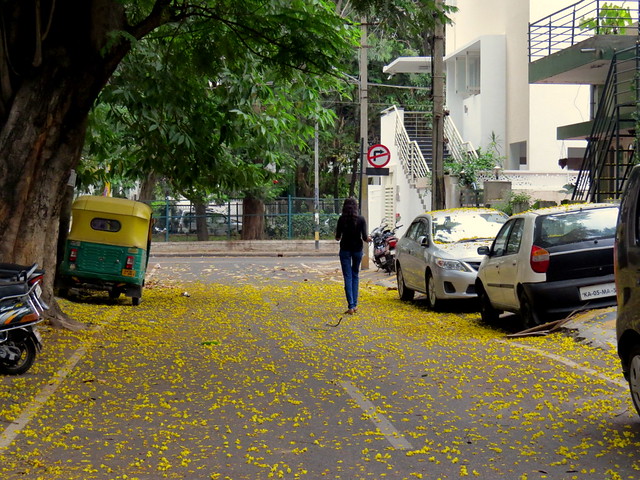
This is a closeup of the Copper Pod flower and the seed which gives the tree its name: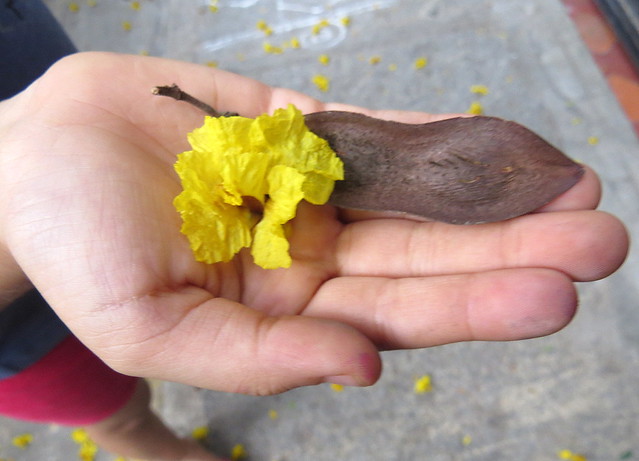
Here is the carpet of Honge flowers:
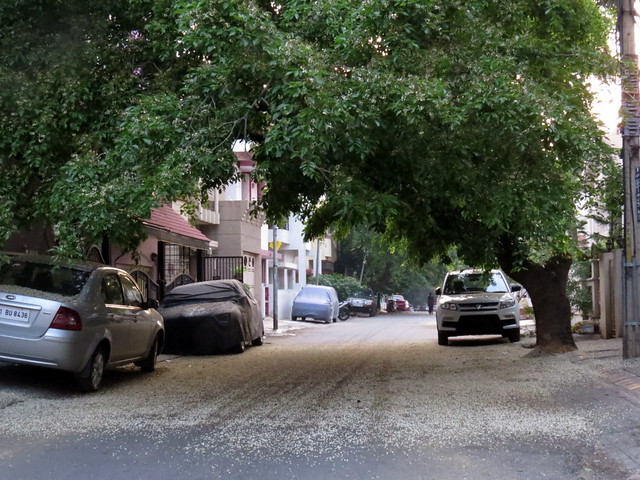
The purple of the Jacaranda is lovely too: 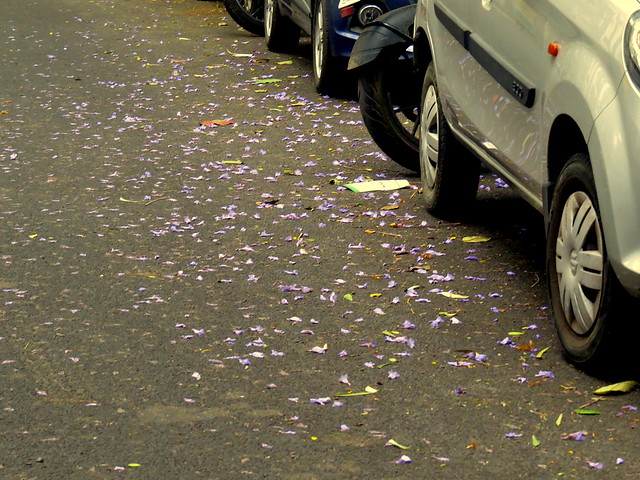
Sometimes two flowers seem to talk to each other, like the Copper pod and Jacaranda! 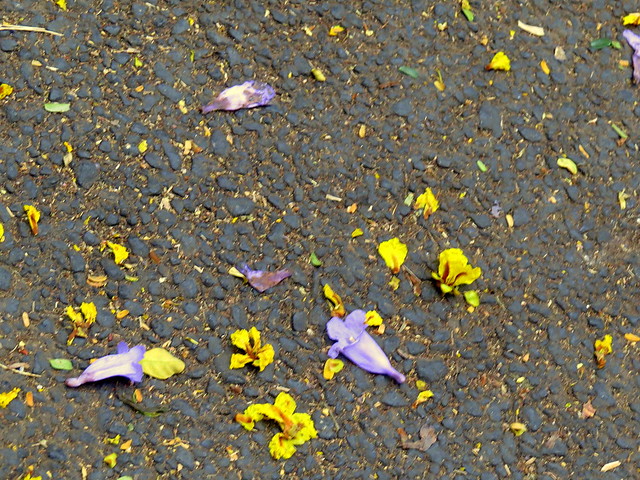 As we walk, feeling uncomfortable in the heat, such sights do a lot to mitigate our discomfort, and make our tired steps happier. I do wish more trees are planted regularly, and allowed to grow tall and beautiful.
As we walk, feeling uncomfortable in the heat, such sights do a lot to mitigate our discomfort, and make our tired steps happier. I do wish more trees are planted regularly, and allowed to grow tall and beautiful.
Related Articles
It’s a world of flowers, with all shades and hues
Lalbagh – Flower Show or Garbage Show?
Gifting flowers? Get a glimpse into Huvina Mandi
